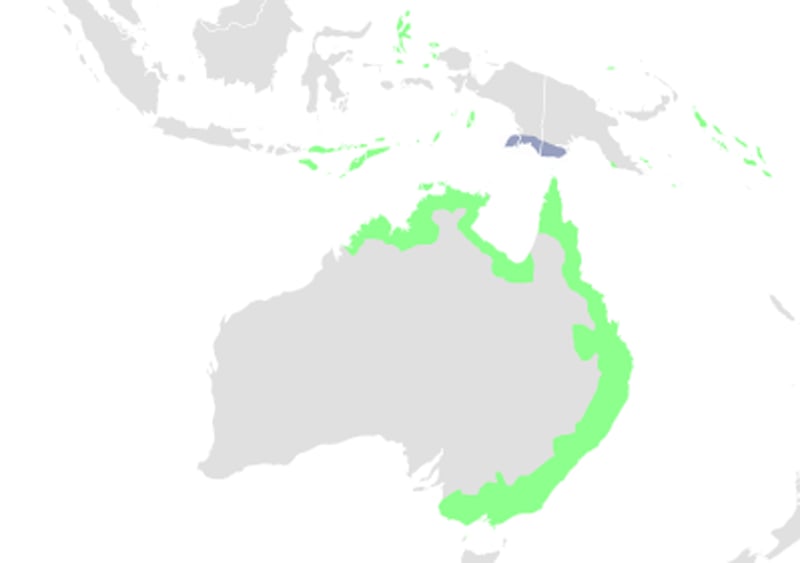Bird of the day
Australian rufous fantail
Rhipidura rufifrons
The Australian rufous fantail (Rhipidura rufifrons) is a small passerine bird, most commonly known also as the black-breasted rufous-fantail or rufous-fronted fantail, which can be found in Australia.
Characteristic of species that have a large range, the Australian rufous fantail has many subspecies. However the taxonomic treatment of its subspecies and other relatives is still debated. The Australian rufous fantail is easily distinguished by their orange-reddish-brown back, rump and base of tail. They have a black and white breast that grades into a white colour on the chin and throat.
They are migratory, travelling to south-eastern Australia in the spring to breed, and then north in the autumn.
The Australian rufous fantail tends to feed on small insects in the lower parts of the canopy. They are very active birds making short, frequent flights. They may also hop between foliage or on the ground, during foraging.
Although their population is thought to be declining, their relatively large range and abundance make them a species of least concern according to the IUCN.
Adults are medium-sized birds, generally ranging from 14.5 cm – 18.5 cm in length, averaging at around 15 cm; their wingspan is between 18 cm – 22.5 cm, averaging at around 21 cm. They weigh roughly 10 grams. The male and female of the species look identical.
However, females are generally smaller than the males.
The forehead is a richly reddish-brown colour across the eyes. The eyes have a white arc just below them. The top of the head, back of the neck and the upper back, transition from an olive to reddish-brown colour, which then blends into a blackish-brown, long, fan-shaped tail. This blackish-brown tail, contrasts with the base of the tail, which is tipped with a paler colour, often white.
It has black ear-coverts (feathers over the ears, just below and behind the eyes). The throat is white (in most subspecies), and there is a black bar across the upper breast. Below this, the lower breast is off-white with black scale-like spots which transitions into an off-white colour towards the centre of the abdomen. The eyes, bill and feet of the bird are all a brown colour.
The aforementioned colours do not change during different seasons. However, compared to the adults, the juveniles have generally duller coloured backs and marginally browner tails and underparts. On the other hand, the base of the bill and their legs are a paler brown relative to an adult's.
A physical description that may help distinguishing between the different subspecies can be found in the subspecies section of this article.
The plumage in the immature birds is similar to those of the adults and in both sexes. Adults moult annually prior to the breeding season, and this basic plumage does not vary.
These have been not well characterised in the Australian rufous fantail. Nevertheless, it has been observed to create several different types of sounds such as chips, buzzes, and scolds. Their "chip call" is often what first attracts an observer's attention. This call is high pitched, with two chip noises given in quick succession. It is produced during food searching, territory defence and can be used as an alarm call when a predator is identified. They sing after sunset from perches, one reason is to attract the opposite sex.
Whilst it is similar in size and shape to grey fantails (Rhipidura albiscapa), it has a slightly larger fantail and creates higher pitched and softer songs.
Its diagnostic physical features: orange-reddish-brown back, rump and base of tail – easily differentiate it from other fantails. Moreover, it can be further distinguished from similar fantails as it tends to forage in shady and moist regions of habitats that are close to the ground.
Aliases
Rhipidura rufifrons, Rhipidura (Howeavis) rufifrons
Range
